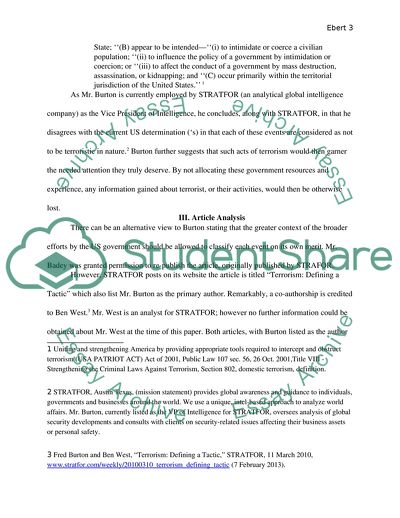Cite this document
(The Defining of Terrorism: The Difficulties in an Otherwise Simple Definition Admission/Application Essay Example | Topics and Well Written Essays - 2000 words, n.d.)
The Defining of Terrorism: The Difficulties in an Otherwise Simple Definition Admission/Application Essay Example | Topics and Well Written Essays - 2000 words. https://studentshare.org/politics/1794247-article-review-by-burton
The Defining of Terrorism: The Difficulties in an Otherwise Simple Definition Admission/Application Essay Example | Topics and Well Written Essays - 2000 words. https://studentshare.org/politics/1794247-article-review-by-burton
(The Defining of Terrorism: The Difficulties in an Otherwise Simple Definition Admission/Application Essay Example | Topics and Well Written Essays - 2000 Words)
The Defining of Terrorism: The Difficulties in an Otherwise Simple Definition Admission/Application Essay Example | Topics and Well Written Essays - 2000 Words. https://studentshare.org/politics/1794247-article-review-by-burton.
The Defining of Terrorism: The Difficulties in an Otherwise Simple Definition Admission/Application Essay Example | Topics and Well Written Essays - 2000 Words. https://studentshare.org/politics/1794247-article-review-by-burton.
“The Defining of Terrorism: The Difficulties in an Otherwise Simple Definition Admission/Application Essay Example | Topics and Well Written Essays - 2000 Words”. https://studentshare.org/politics/1794247-article-review-by-burton.


